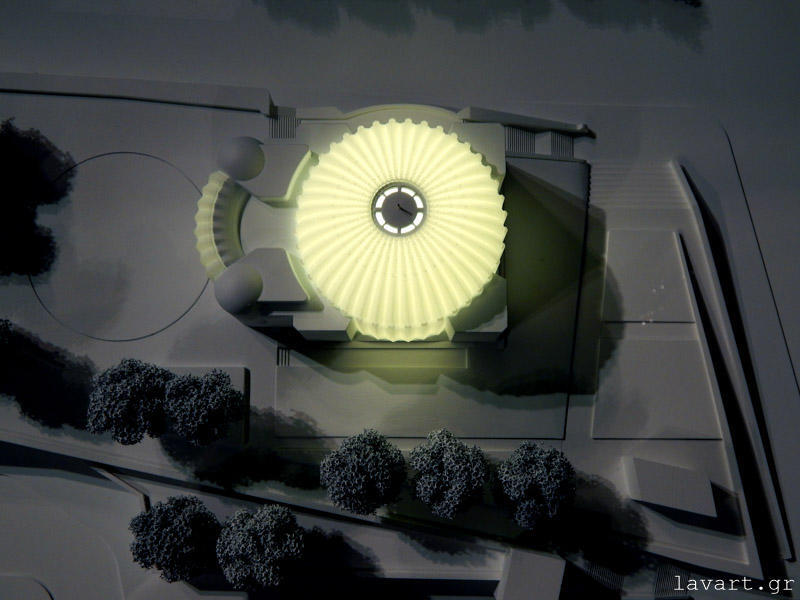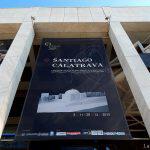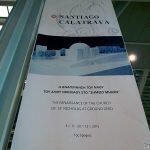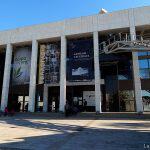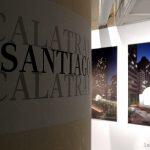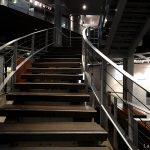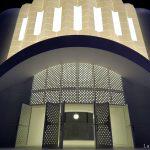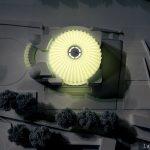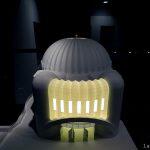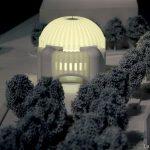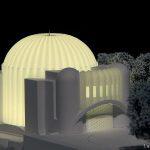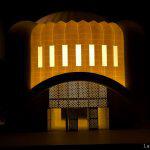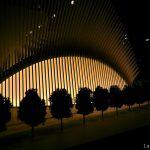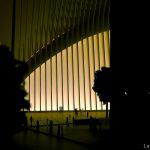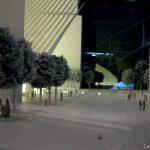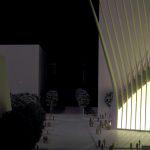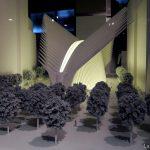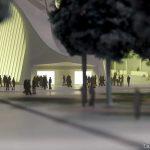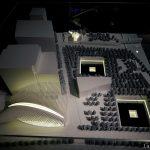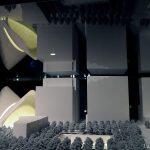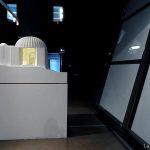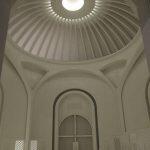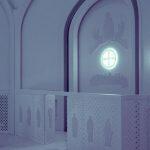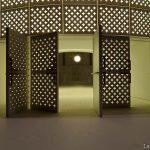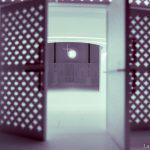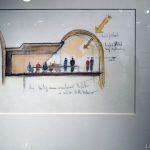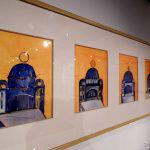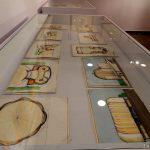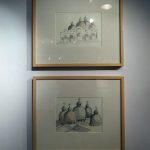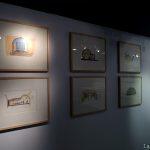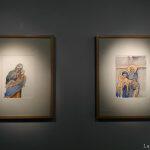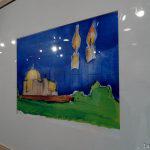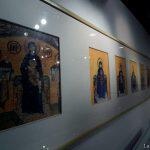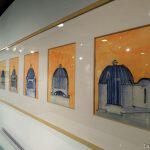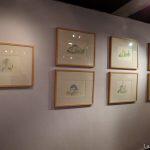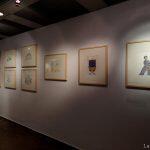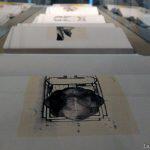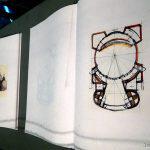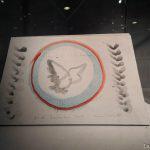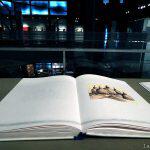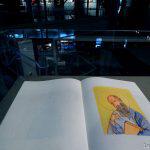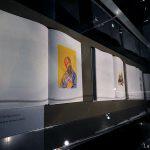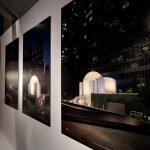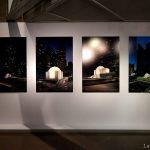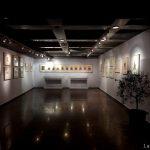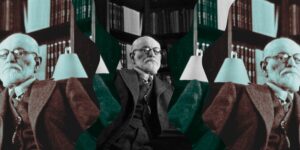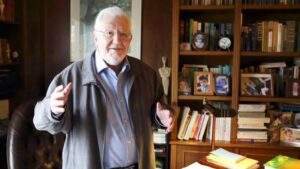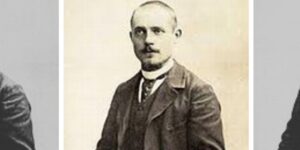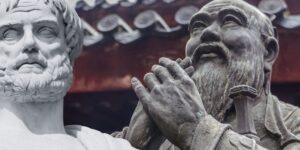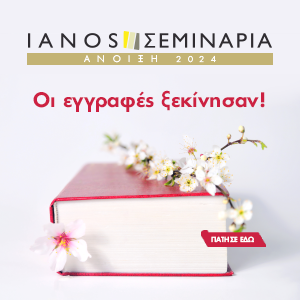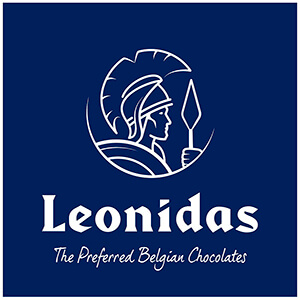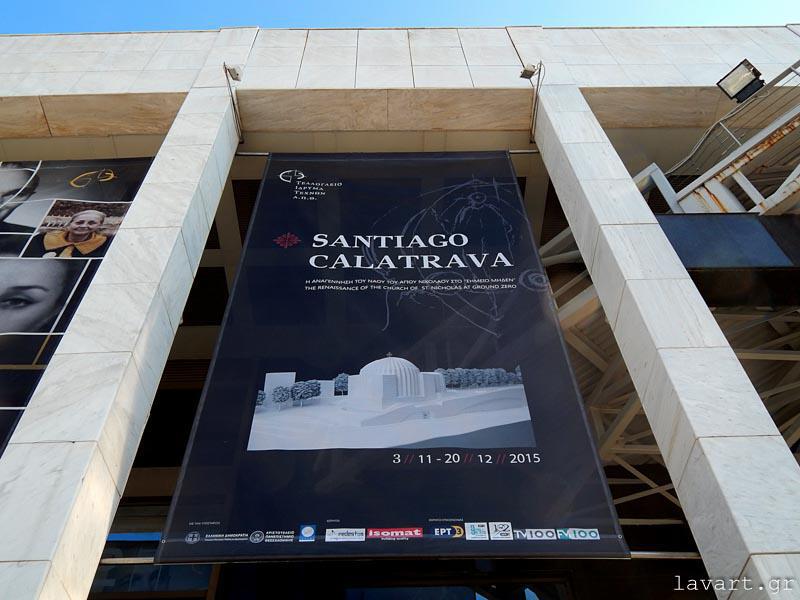 [dropcap size=big]T[/dropcap]he Telloglio Institution of Arts at the Aristotle University of Thessaloniki is hosting the exhibition The Renaissance of the church of St. Nicolas at «Ground Zero» after its presentation at Benaki Museum in Athens. Τhis project, which is made by the architect Santiago Calatrava, lies in New York, 130 Liberty St. where the well known terrorist attack took place on 11th September, 2001. The old church that had been there was entirely demolished. Therefore, after some deliberations with the local authorities, the new Greek Οrthodox church of St. Nikocals was intended to be built in the east end of the new Liberty Park, above the Vehicle Security Center of the World Trade Centre. Before referring to the project itself, it may be appropriate to accentuate some features of the architect. Santiago Calatrava from Valencia, Spain is an architect and civil engineer. His reputation was consolidated by the Bach de Roda bridge in Barcelona in 1984, followed by other remarkable projects such as the busiest cultural center of Spain City of Arts and Sciences, for which he has received the first prize in the respective contest.
[dropcap size=big]T[/dropcap]he Telloglio Institution of Arts at the Aristotle University of Thessaloniki is hosting the exhibition The Renaissance of the church of St. Nicolas at «Ground Zero» after its presentation at Benaki Museum in Athens. Τhis project, which is made by the architect Santiago Calatrava, lies in New York, 130 Liberty St. where the well known terrorist attack took place on 11th September, 2001. The old church that had been there was entirely demolished. Therefore, after some deliberations with the local authorities, the new Greek Οrthodox church of St. Nikocals was intended to be built in the east end of the new Liberty Park, above the Vehicle Security Center of the World Trade Centre. Before referring to the project itself, it may be appropriate to accentuate some features of the architect. Santiago Calatrava from Valencia, Spain is an architect and civil engineer. His reputation was consolidated by the Bach de Roda bridge in Barcelona in 1984, followed by other remarkable projects such as the busiest cultural center of Spain City of Arts and Sciences, for which he has received the first prize in the respective contest.
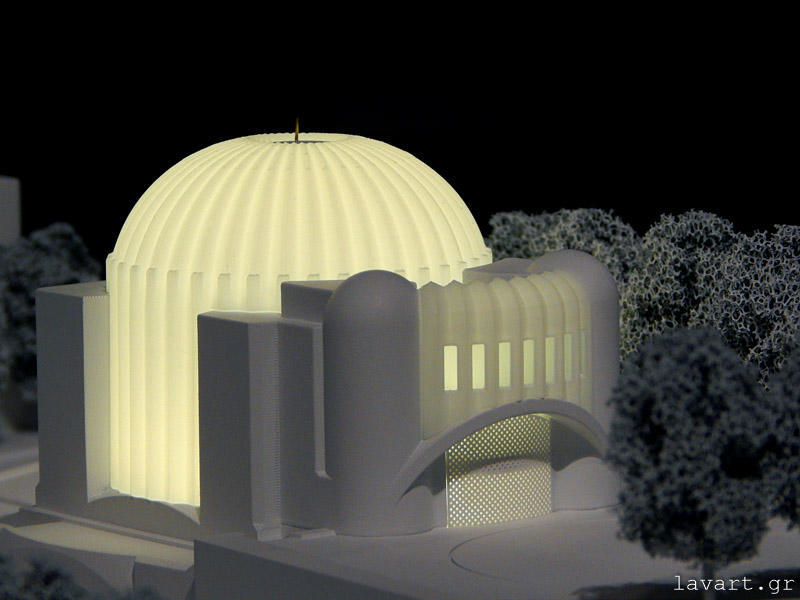 [dropcap size=big]T[/dropcap]he Church of St. Nicholas, as mentioned above, was designed in the area where the Twin Towers were destroyed in 2001. So, It is a project that encompasses memories and accommodates the devoted worshippers. The questions raised in the architect’s mind is to whom worshippers the church addresses and what is the appropriate impact of this “house of God.” It is addressed to the Greek Orthodox Church, but ηε he also hopes to become a place of spiritual intellect and mental salvation regardless of religion. The standards which Santiago Calatrava consulted were the most monumental and representative of our religious past. As a consequence, he explored the church of Hagia Sophia in Instabul, and, more specifically, the mosaic of the Virgin and Child located in the dome of Hagia Sophia. He creates a series of sketches and watercolors that he calls «Mother and Child. The genesis of the dome», to which he acts differently and results in geometries that finally give the form of the church to be designed. In the framework of these very relevant and descriptive sketches of the syllogistic course of the architect, the consideration of the entry of light in a church, the shapes of the domes and graphic painting approaches are also included.
[dropcap size=big]T[/dropcap]he Church of St. Nicholas, as mentioned above, was designed in the area where the Twin Towers were destroyed in 2001. So, It is a project that encompasses memories and accommodates the devoted worshippers. The questions raised in the architect’s mind is to whom worshippers the church addresses and what is the appropriate impact of this “house of God.” It is addressed to the Greek Orthodox Church, but ηε he also hopes to become a place of spiritual intellect and mental salvation regardless of religion. The standards which Santiago Calatrava consulted were the most monumental and representative of our religious past. As a consequence, he explored the church of Hagia Sophia in Instabul, and, more specifically, the mosaic of the Virgin and Child located in the dome of Hagia Sophia. He creates a series of sketches and watercolors that he calls «Mother and Child. The genesis of the dome», to which he acts differently and results in geometries that finally give the form of the church to be designed. In the framework of these very relevant and descriptive sketches of the syllogistic course of the architect, the consideration of the entry of light in a church, the shapes of the domes and graphic painting approaches are also included.
All these in the exhibition show the route towards the completion of the conceptual idea, which becomes an edifice at the rest of the exhibition that includes models and photorealistic visualizations of the church of St. Nicolas. The implementation of this project uses the means of modern architecture of the 21st century aimed to convey the above sense.
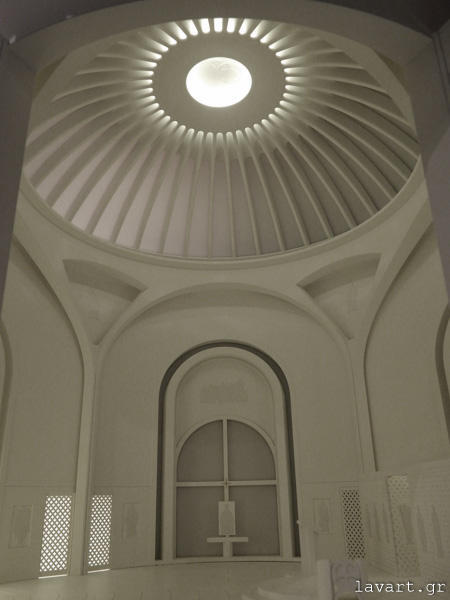 [dropcap size=big]T[/dropcap]he church raises at the level of nine meters above the height of the street. The outer appearance, especially in the evening hours, is representative of its message. It is made of four large stone pillars writing a block, while the dome with the drum is made of stone and externally covered with illuminated glass. The typical structure of the church combined with expedients of the 21st century – light is a material in αctual architecture – create a striking effect. Despite the fact that the final result is a compact bulk, the materiality and handling of the light feature these sensitivities and intentions of the architect and give another aspect to the type of the church, according to the standards used in our eye. At this point, it is very important to point out that the light and the way it enters the church has always been the main study issue in the design of temples, as light signifies something divine and numinous.
[dropcap size=big]T[/dropcap]he church raises at the level of nine meters above the height of the street. The outer appearance, especially in the evening hours, is representative of its message. It is made of four large stone pillars writing a block, while the dome with the drum is made of stone and externally covered with illuminated glass. The typical structure of the church combined with expedients of the 21st century – light is a material in αctual architecture – create a striking effect. Despite the fact that the final result is a compact bulk, the materiality and handling of the light feature these sensitivities and intentions of the architect and give another aspect to the type of the church, according to the standards used in our eye. At this point, it is very important to point out that the light and the way it enters the church has always been the main study issue in the design of temples, as light signifies something divine and numinous.
Furthermore, it is very important to note that in the church of St. Nicolas the light is the dominant element and it is not only revealed within the church (as it is usually done with plenty of art inside Hagia Sophia in Instabul), but also radiates to the real world. It is an extrovert handling of the temple proving ultimately its intentions. The church represents the Greek Orthodox Christianity, but lies there to redeem and rest the souls that marked this place, as well.
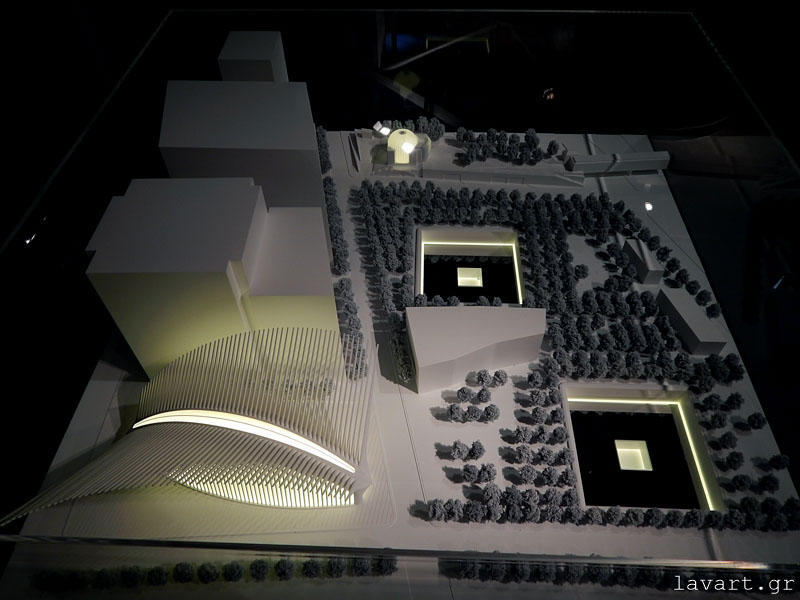 [dropcap size=big]L[/dropcap]ast but not least, in the exhibition, the models and a video depict the Communication Center at the World Trade Center where the temple is located and it is also a project of Santiago Calatrava. The personal style of the artist as well as the great manufacturer is recognized in the form of this creation, and, he justifies this winged appearance as a symbol of freedom resembling a bird that leaves from the human’s hands ready to fly away and not as a kind of personal obsession.
[dropcap size=big]L[/dropcap]ast but not least, in the exhibition, the models and a video depict the Communication Center at the World Trade Center where the temple is located and it is also a project of Santiago Calatrava. The personal style of the artist as well as the great manufacturer is recognized in the form of this creation, and, he justifies this winged appearance as a symbol of freedom resembling a bird that leaves from the human’s hands ready to fly away and not as a kind of personal obsession.
Article: Theano Tsonona (Lavart)
Photos: Theodora Kyziridoy (Lavart)
Translation: Natasa Avraam (Lavart)

